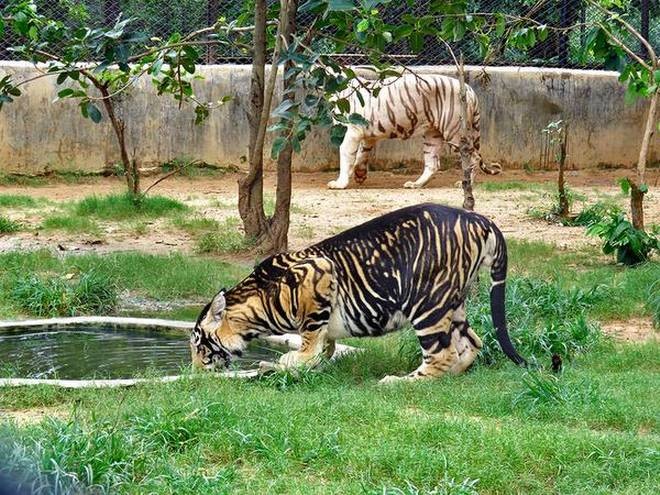Pseudomelanistic tigers in Odisha

Disclaimer: Copyright infringement not intended.
Context: An estimated 37% of Panthera tigris in the Similipal Tiger Reserve (in eastern India) are pseudomelanistic, characterised by wide, merged stripes.
What lead to the pseudomelanistic tigers?
- This is the result of a rare mutation in one gene, Transmembrane Aminopeptidase Q or Taqpep, recessively inherited variants of which are responsible for the marks in domestic cats and king cheetahs.
- The mutation is rarely seen in tigers outside Similipal.
- With shrinking habitats, the tiger population becomes increasingly isolated.
- This causes inbreeding, resulting in a lack of genetic variation, making them prone to extinction.
- For the endangered animal to survive and thrive in the wild, there needs to be more genetic variation.
- The population at Similipal Tiger Reserve is small and potentially disconnected from other populations.
- Genetic rescue should benefit the population by increasing heterozygosity and decreasing the probability of inbreeding depression. Careful consideration would be required when selecting the immigrant.
https://www.thehindu.com/sci-tech/science/how-and-why-these-tigers-in-odisha-changed-their-stripes/article36443586.ece?homepage=true



1.png)
